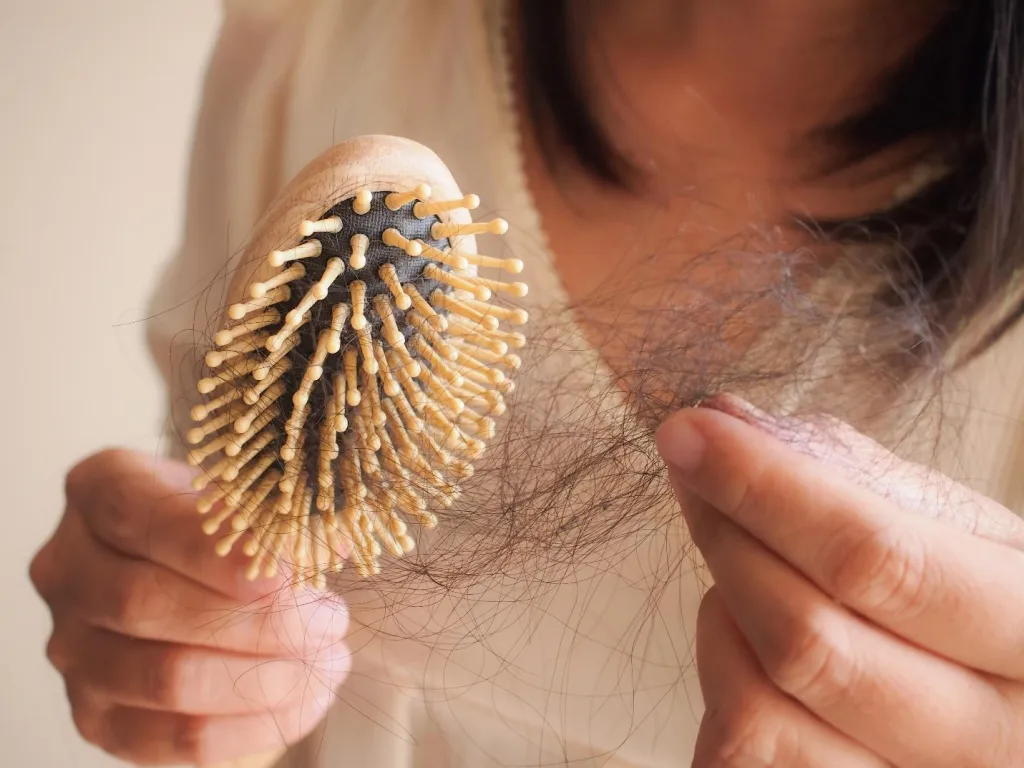Corazon Almira Mella, MD, DPDS
Hair loss among women remains a “taboo” topic. Unlike with men wherein it is considered socially acceptable with advancing age, women carry the pressure of maintaining a full scalp of hair throughout life. The notion that hair is associated with one’s beauty, as old-fashioned as it seems, still encompasses today’s culture. But just like men, women also suffer from hair thinning and hair loss – medically termed as female pattern hair loss (FPHL). And, it’s about time the discussion on such topic be normalized – because the more women are aware of it, the more that they can take control. Moreover, the earlier the hair loss is acknowledged and addressed, the better the outcome will be.
What is female pattern hair loss?
FPHL is the most common cause of hair loss among women. It can affect any age group but is more widely seen after menopause. It is characterized by progressive and widespread thinning of hair over the top of the head or crown. Dermatologists refer to this as the “Christmas tree” pattern but the younger generation have termed it is as hair or scalp cleavage. In contrast with male hair loss, female pattern hair loss does not usually result in total baldness. The process usually occurs in bouts – wherein there are accelerated periods of hair loss of around 3-6 months that are followed by episodes of stability that can last a year.
What causes female pattern hair loss?
Now, there are many reasons for female hair loss and this not only includes FPHL but also other medical conditions, physical and emotional stress. To be able to rule out other possible causes, a consult with a board certified dermatologist should be done.
The condition has a strong genetic predisposition and these genes could be inherited from either or both parents. Unlike with male hair loss, it is not clear whether or not androgens or male sex hormones play a role in its development. Environmental factors such as psychological stress, hypertension, diabetes mellitus, smoking, lack of photoprotection and physical activity have also been noted to be possibly related to FPHL.
Are there diagnostic tests that needs to be done for female pattern hair loss?
To properly investigate the root cause of hair loss, several tests are done by the dermatologist. This may include a hair pull test which is done by gently pulling one’s hair to evaluate how many hairs come out, blood examinations to check for vitamin, mineral and hormone levels as well as scalp examination and trichoscopy to rule out other causes of hair loss. In select cases, a scalp biopsy might also be done by a dermatologist. Biopsies are done to exclude more other types of hair loss such as scarring alopecias (scarring alopecias leads to permanent hair loss).
What is the treatment for female pattern hair loss?
Although there is no absolute cure for female pattern hair loss, there are several treatments available. These treatments are mainly done to slow down or stop the progression of hair loss and not to promote hair regrowth, in general. Thus when getting treatment, it is important to manage expectations. Treatment outcome may also be quite variable.
Treatment options are classified to either topical or systemic. When it comes to topical medications, the most well-known is Minoxidil. Minoxidil was initially used to treat hypertension; but, over time, people who used Minoxidil noted hair growth areas in their body where they had lost hair. Studies have confirmed that application of Minoxidil can induce hair growth. However, it should not be regarded as a quick fix because it will take 4-6 months before improvement in hair density is noted. Furthermore, the use of the medication might actually cause more hair fall during the first few months of use. Another readily available topical treatment is Ketoconazole. Ketoconazole is recognized as an antifungal medication; however, it also has anti-androgenic properties that can be significant in controlling the hormones implicated in hair loss.
Aside from those mentioned, there are other forms of topical treatment – platelet rich plasma therapy, microneedling, and low level light therapy. These options may be presented to you by your dermatologist during consult.
Systemic treatment mainly involves the use of prescription medications such as Spironolactone and Finasteride. Unlike in male pattern hair loss, the use of these oral medications for female pattern hair loss have yet to receive approval from the FDA. The use of these medications should be done with precaution as they are not safe to use for pregnant women or women who are planning to get pregnant.
It might seem like a novel idea, but hair transplant can also be an option for females suffering from hair loss. Dermatologists who have been trained in hair transplant can provide appropriate counseling and assessment on whether or not a person is a good candidate for hair transplant.
Indeed, hair loss in women is not a topic often talked about and a lot of women still suffer in silence. However, it is time to discard the perception that hair loss only happens in men. Female pattern hair loss is not as uncommon as one thinks. There are board certified dermatologists available to help women go through such battle.
They are best qualified to counsel such patients and give proper advice on treatment options.
Reference:
Yip, L. et al. Female pattern hair loss. https://dermnetnz.org/topics/female-pattern-hair-loss. Jul. 2015.
Bhat, Yasmeen Jabeen et al. “Female Pattern Hair Loss-An Update.” Indian dermatology online journal vol. 11,4 493-501. 13 Jul. 2020, doi:10.4103/idoj.IDOJ_334_19
Singal A, Sonthalia S, Verma P. Female pattern hair loss. Indian J Dermatol Venereol Leprol. 2013 Sep-Oct;79(5):626-40. doi: 10.4103/0378-6323.116732. PMID: 23974580.




